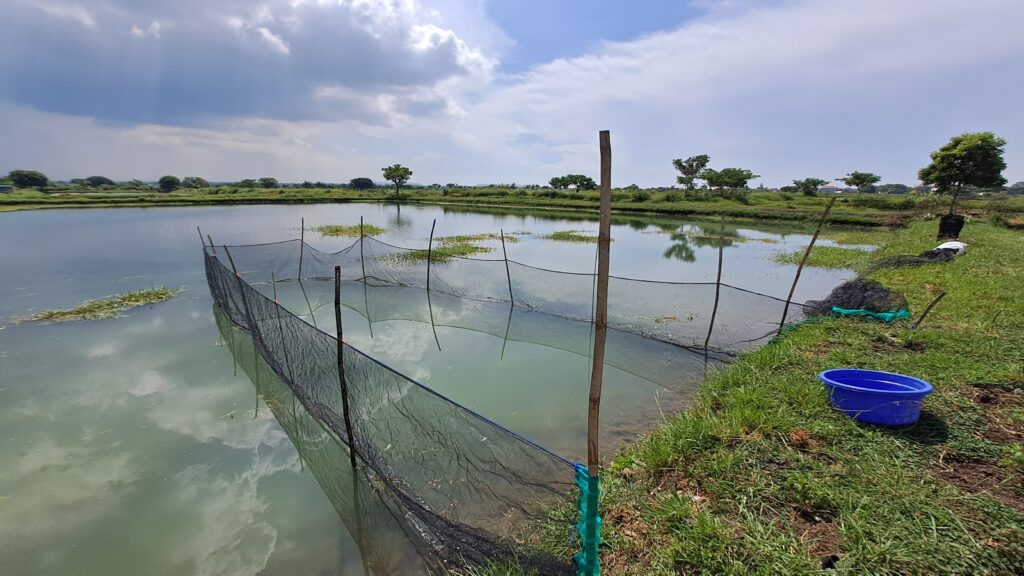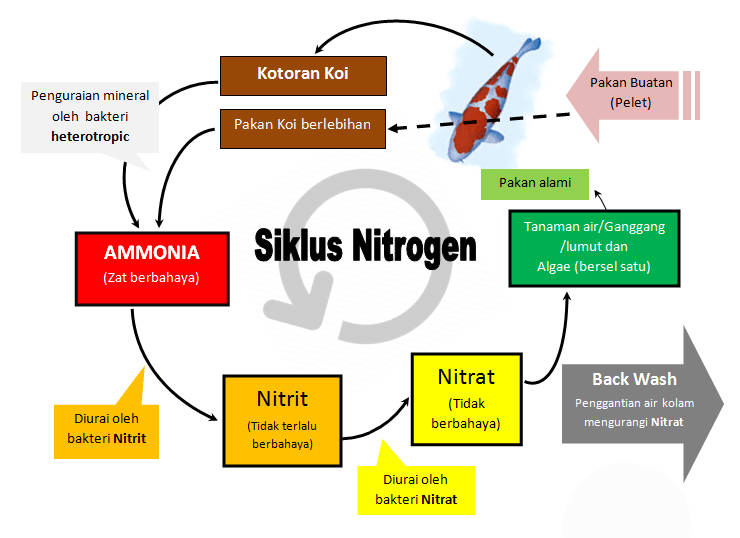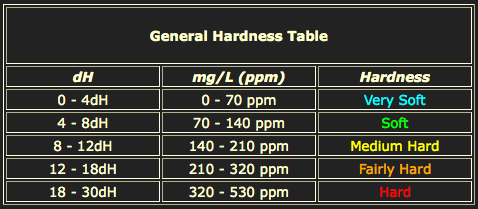
Caring for koi is actually how to maintain the water quality of the koi pond. Why is that? Because koi live in water. Therefore, it is very important to maintain the quality of the water so that koi can live healthily and grow well. Almost all problems that occur with koi health are due to low quality pond water.
Low quality pond water will certainly make koi feel uncomfortable or even seriously endanger their lives.If the koi are in an uncomfortable condition, it will cause the koi to become stressed and easily attack various kinds of diseases. That’s why the key to success in caring for koi is how to maintain the water quality so that it is always in good condition according to what the koi want.
Is there any truth to the myth that clear water is good for koi? This is not always the case, because clear water is not a measure. The next question is what and how to measure good water quality for koi? The following is information about the chemical content contained in pool water along with the parameters needed to meet pool water quality standards.

1. AMMONIA
Ammonia (NH3) is the most dangerous substance for koi if it is dissolved in pond water at levels that exceed the limits. Ammonia is a chemical compound found in koi feces and urine which is excreted through the anus. Besides that. Ammonia is also released through the gills as waste from protein digestion.
Ideally, the ammonia content in the water is zero, meaning there is absolutely no ammonia in the pool water. This condition could occur if the Koi do not excrete any feces that pollute the pond water. However, as living creatures, koi certainly need food for their growth. The food will be processed by the koi’s digestive organs to absorb the nutrients it needs, and the rest will be excreted as feces.
Thus, under normal conditions, water-soluble ammonia cannot be avoided, but efforts must be made to keep the levels low, namely below 0.1 ppm. (parts per million). Ammonia levels dissolved in pond water exceeding 0.1 ppm can poison koi. For this reason, it is very necessary to build a good filter system for the koi pond so that the water quality is maintained.
2. pH
pH (potential/power of hydrogen) is a parameter to indicate the degree of acidity or alkalinity of a solution which is measured on a scale between 0 (very acidic) to 14 (very basic).
Koi can live normally in water with a pH of 5.5 – 8.5. However, water pH conditions that are too high can cause the effect of ammonia to become increasingly toxic to koi. For example, if the pH is below 7, then koi can still tolerate ammonia levels of 1 ppm. However, at a pH above 8, an ammonia level of only 0.1 ppm can endanger the safety of koi.
3. TEMPERATURE
Pond water temperature also affects the life of koi. The ideal temperature ranges between 20° C – 25° C. However, koi still survive at temperatures between 2° C – 38° C. Pool water temperature will generally follow environmental conditions. Changes in water temperature depend on the volume of pool water. In an open pool (outdoor pond) temperature changes easily occur. The intensity of sunlight during the day can increase the water temperature significantly and at night, the temperature will decrease more, when compared to an indoor pond. In the dry season, the water temperature tends to be warm and in the rainy season, the average pool water temperature is lower.
Especially in subtropical areas, where there are 4 seasons, in winter, the koi’s appetite will be much reduced. On the other hand, if the water temperature tends to be low, the metabolic process in the koi’s body decreases, so the koi does not need as much food.
The toxic level of ammonia will increase as the temperature increases and the amount of dissolved oxygen in the water decreases. Even though koi can survive up to 38° C or higher, the death rate for koi is also higher.
For temperatures below 12 °C, koi stop producing antibodies and at temperatures around 7 °C, koi enter an area equivalent to hibernation. The bio-converter will stop reproducing at 5 °C.
Therefore, koi feeding should be adjusted to the pond water temperature as follows:
4. NITRITE
Nitrite (NO2-N) is a chemical compound produced when Ammonia has been decomposed by nitrifying bacteria. More clearly, it can be observed from the Nitrogen Cycle (Bio Converter) that occurs in the pool water.

Nitrite is a substance that has a high level of toxicity to koi after Ammonia. Nitrite is not detected in ponds that have a perfect bio-converter. The ideal condition for nitrite levels in pool water is zero, however, it can be tolerated if the levels are still below 0.25 ppm.
The Nitrite content is low, while the Ammonia level is high, indicating that the Ammonia-Nitrite bio-converter process is not running perfectly. However, if the Ammonia level is low with a high Nitrite content, it means that the bacteria that convert Nitrite to Nitrate are not actively working.Nitrite is produced from the autotrophic bacteria Nitrosomonas which combines oxygen and ammonia in a bio-converter process.
As with Ammonia, the Nitrite content can increase drastically in the bio-converter until the bacteria develop and can accept the addition of new Nitrite material. This can happen because there are a lot of new fish added to the pond or occur during the summer when the temperature increases.
Increased fish activity due to rising temperatures can increase Nitrite levels more quickly due to slow bacterial reactions. Nitrites can cause death, especially in small koi, even at concentrations below 0.25 ppm. Nitrites damage the nervous system, liver, spleen and kidneys of koi.
5. NITRATES
Nitrate (NO3-N), is the third chemical compound that is less dangerous for koi when compared to Ammonia or Nitrite. Nitrate is produced by autotrophic bacteria that combine oxygen with nitrite in a bio-converter process.
Ideally, Nitrate and Nitrite levels are zero. If the Nitrate level is zero while there are still Nitrite levels in the pool water, this indicates that the Nitrite-Nitrate converting bacteria are not working effectively.
In a mature pool with regular maintenance including changing the pool water, max. 20% every 2 or 4 weeks, generally has a nitrate content of around 50 – 100 ppm. Nitrate concentrations of up to 200 ppm are still acceptable.
The high nitrate content can stimulate the growth of algae that causes green water. Therefore, even though nitrate is not dangerous for koi, if the level exceeds 100 ppm, the pond water will not appear clear or even greenish in color. To reduce high nitrate levels in pool water, you can replace the pool water with new water periodically.
6. HARDNESS (GH and KH)
GH, General Hardness, is a measure of the buffering capacity of water in terms of the buffering capacity of carbonate units. GH is a number, which is a combination of hardness (mineral content including calcium and magnesium) and carbonate activity.
KH, Kabonate Hardness is GH by reducing the minerals contained and leaving only the Carbonate. To increase hardness, you can use CaCl, which is contained in shells. Increasing hardness can help koi to process osmoregulation and thereby reduce the possibility of stress.
GH and KH levels that are still acceptable for koi are 100 ppm. If it is above this level it can cause black spots on the koi’s body (shimmies).
Related to this, the term TDS (Total Dissolved Solids) is usually used to measure the levels of KH, GH, fish waste, food waste and various chemical substances in water. TDS is often used as a parameter, especially to assess pond water quality for koi cultivation. The lower the TDS level of the pond water, it is believed that it can support the growth rate of koi.

7. DISSOLVED OXYGEN (DO)
Is about oxygen dissolved in pool water. This problem arises in summer or high air temperatures, which results in increased water temperatures and moss growth. As the size of the koi gets bigger, it will also need more oxygen. Low levels of dissolved oxygen in the water will stress koi and can kill large koi.
At low water temperatures, the water will more easily bind oxygen to the air, thereby increasing dissolved oxygen levels. Plants and moss consume oxygen at night and release it again during the day. The time period when the oxygen level will reach its lowest point in the pool is in the morning.
If the koi population is too dense, while the water temperature is also high, additional aeration is needed in the pond water to maintain sufficient oxygen availability.
The ideal DO
The ideal dissolved oxygen level for koi is between 7 – 8 ppm. The DO level below this is temporarily not too much of a problem as long as the pH, ammonia and nitrite levels are still safe.
However, DO levels that are continuously below 8 ppm can cause serious problems for Koi. Koi can still survive for several days at a DO level of 5 ppm, but if it drops to the level of 3 ppm it will cause the Koi to experience a lack of oxygen or hyporexia.
In emergency situations, giving the ocean 3% hydrogen peroxide by dissolving/spraying it into the pool will help increase dissolved oxygen levels in the water. Don’t give this solution too close to the fish because it will be dangerous for the koi’s gills. This condition is only for emergency purposes if you cannot provide an oxygen gas cylinder or portable aerator.
Another way to provide first aid for koi that lack oxygen is to place them in water with a low temperature or by placing ice cubes in the water to speed up the decrease in temperature. Water with a lower temperature will accelerate dissolved oxygen in the water.
©2024 Be Koi Farm – Web by elshobah